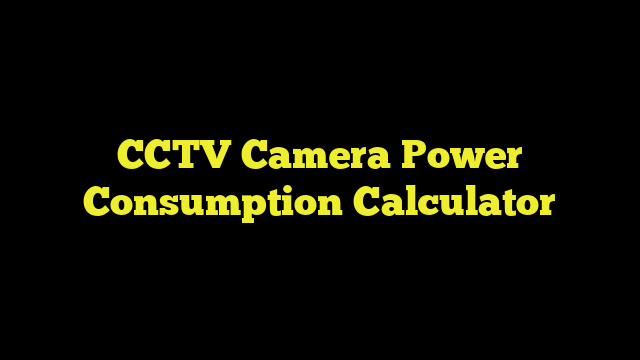
Calculating the power consumption of a CCTV camera is crucial for several reasons, including estimating operational costs and ensuring that your power supply can meet the demands of your surveillance system. To perform this calculation, you’ll need to use the basic formula:
Power (in watts) = Voltage (in volts) x Current (in amperes)
Let’s break down the process step by step:
- Determine the Operating Voltage: The first step is to identify the voltage at which your CCTV camera operates. Most CCTV cameras are designed to work with either 12V DC (Direct Current) or 24V AC (Alternating Current). This information is typically provided in the camera’s technical specifications or can be found on the camera’s label.
- Find the Current Rating: The current rating of the CCTV camera is the amount of electric current it draws while in operation. It is usually specified in amperes (A) and can also be found in the camera’s technical documentation or on its label.
- Apply the Formula: Once you have both the voltage and current values, you can use the formula to calculate the power consumption.For example, let’s say your CCTV camera operates at 12V DC and has a current rating of 0.5A:
Power (in watts) = 12V x 0.5A = 6 watts
In this case, the CCTV camera consumes 6 watts of power.
It’s important to note that this calculation provides the power consumption of the camera itself. If you have multiple cameras in your surveillance system, you’ll need to perform this calculation for each camera and then add up the power consumption values to determine the total power requirement for your entire CCTV system.
Additionally, keep in mind that some CCTV cameras may have varying power consumption depending on their operating mode. For example, they may consume more power when actively recording compared to when they are in standby mode. Always refer to the camera’s technical documentation for precise power consumption information to ensure that your power supply can adequately support your CCTV system. This accurate calculation not only helps you manage operational costs but also ensures the reliability and stability of your surveillance setup.